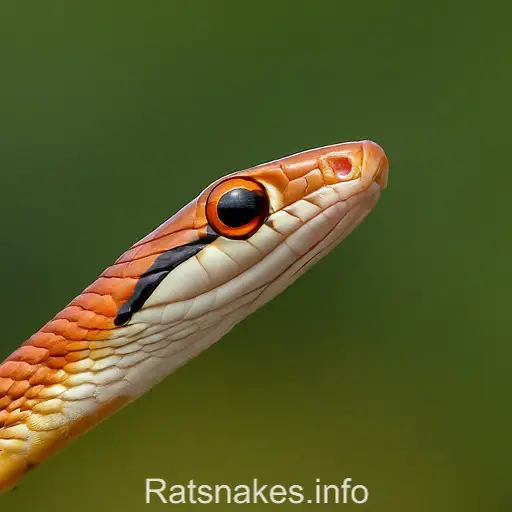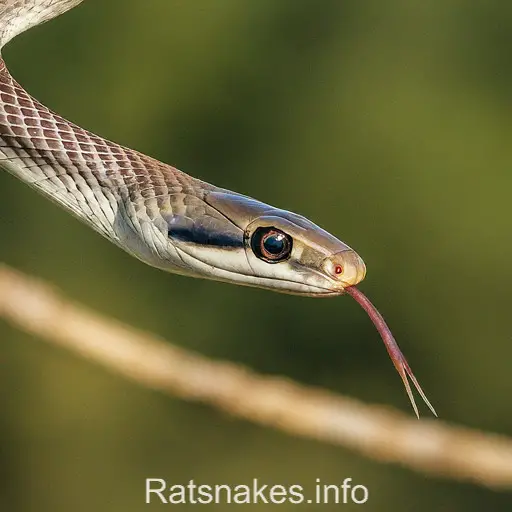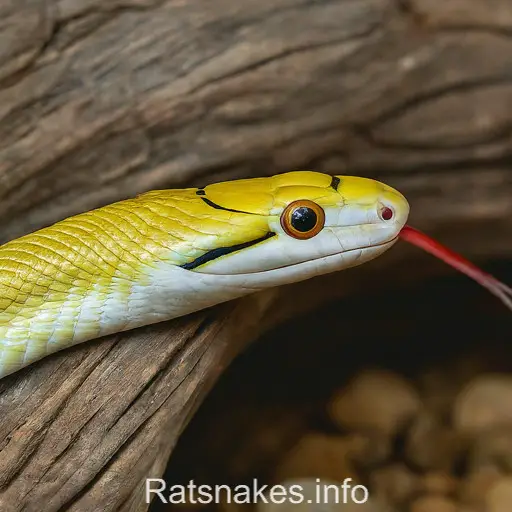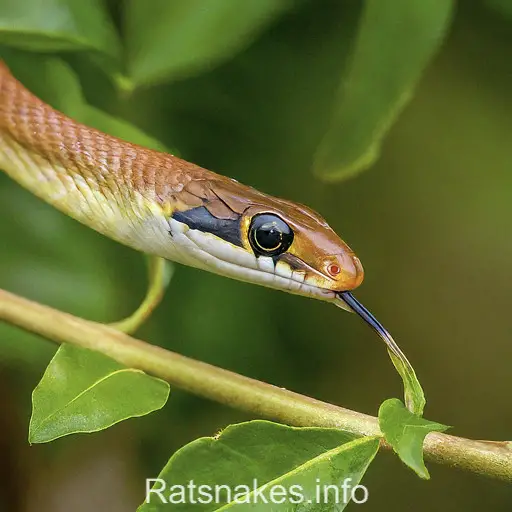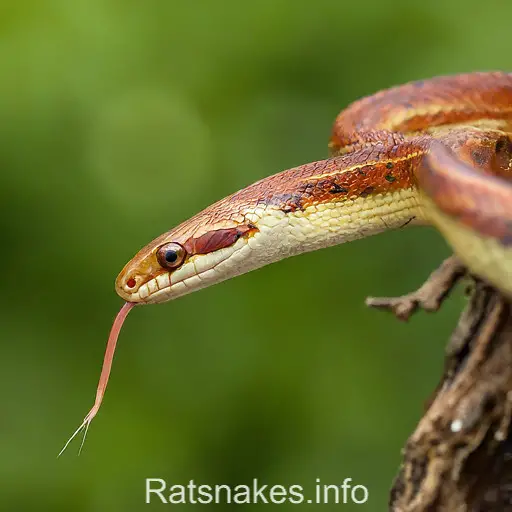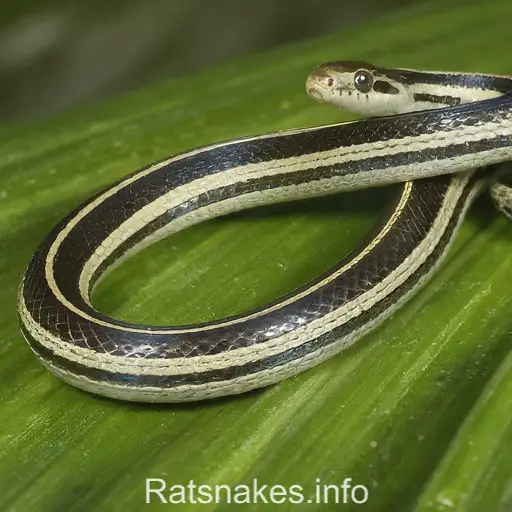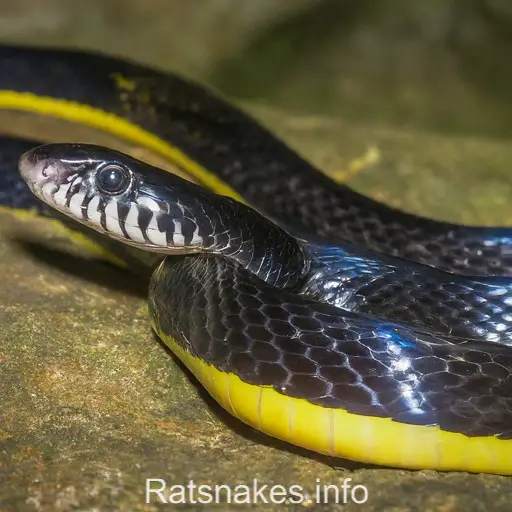
Ptyas dipsas, commonly known as the Oriental rat snake, is a fascinating species that captivates both reptile enthusiasts and researchers alike. With its sleek body and distinctive coloration, this non-venomous snake is a sight to behold in its natural habitat.
We’ll delve into the unique characteristics and behaviors of Ptyas dipsas, shedding light on its diet, habitat preferences, and reproduction patterns. Understanding these aspects not only deepens our appreciation for this species but also contributes to conservation efforts aimed at protecting its dwindling populations.
Join us as we embark on a journey to uncover the secrets of the Oriental rat snake and gain a newfound respect for the remarkable adaptations that have allowed Ptyas dipsas to thrive in diverse environments.
Origins of the Name “Ptyas dipsas”
The name “Ptyas dipsas” has an interesting etymology. The genus name “Ptyas” is derived from the Greek word “ptys”, meaning folded wing, possibly referring to the keeled scales found on the snake’s body. On the other hand, the species name “dipsas” originates from a Greek mythological term for a thirst-inducing serpent.
The Oriental rat snake, also known as Ptyas dipsas, is a fitting name as this species is known to inhabit a wide range of environments with a preference for wooded habitats where rodents, its primary food source, are abundant. “Dipsas” in the name could be alluding to the fact that these snakes are excellent hunters, preying on rodents to quench their hunger.
The name “Ptyas dipsas” encapsulates the essence of this non-venomous snake, highlighting its adaptability, hunting prowess, and unique characteristics that have intrigued researchers and reptile enthusiasts alike.
Unique Characteristics of the Oriental Rat Snake
When examining the Ptyas dipsas, several unique characteristics distinguish it from other snake species. Here are some noteworthy traits that set the Oriental rat snake apart:
- Non-venomous: The Ptyas dipsas is a non-venomous snake, relying on constriction rather than venom to subdue its prey.
- Adaptability: This species demonstrates remarkable adaptability to various habitats, including forests, grasslands, and agricultural areas.
- Keel scales: One distinguishing feature of the Oriental rat snake is its keeled scales, which provide traction and aid in climbing trees and other surfaces.
- Hunting behavior: Known for its hunting prowess, the Ptyas dipsas preys on rodents, birds, and lizards, using stealth and agility to capture its meals.
- Mimicry: This snake species exhibits mimicry behavior, imitating the movement and appearance of venomous snakes to deter potential predators.
- Coloration: With its olive green to brown coloration, the Oriental rat snake blends seamlessly into its natural environment, enhancing its camouflage abilities.
Overall, the Ptyas dipsas‘s unique characteristics contribute to its success as a predator and its ability to thrive in diverse ecosystems.
Diet Preferences of Ptyas dipsas
When it comes to diet preferences, Ptyas dipsas is known for its varied taste in prey. This snake species primarily feeds on rodents and birds, making it a proficient predator in its ecosystem. They rely on their keel scales for climbing to access bird nests and rodent burrows, showcasing their hunting prowess. With their mimicry behavior and camouflage coloration, they easily blend into their surroundings, making them efficient hunters.
Ptyas dipsas plays a crucial role in maintaining the ecological balance by controlling rodent populations. Their adaptability to various habitats allows them to thrive and find ample food sources. By targeting rodents and birds, they contribute to biodiversity by ensuring that certain species do not become overly abundant.
In addition to rodents and birds, Ptyas dipsas may also consume lizards, amphibians, and insects when the opportunity arises. This dietary flexibility further underscores their adaptability and survival skills in different environments. By having a diverse diet, Ptyas dipsas demonstrates its ability to thrive in a wide range of ecosystems.
| Diet Preferences of Ptyas dipsas |
|---|
| Prey |
| Rodents |
| Birds |
| Lizards |
| Amphibians |
| Insects |
Habitat Selection and Adaptations
When it comes to Ptyas dipsas, their habitat selection is quite diverse, allowing them to adapt to various environments with ease. These rat snakes are commonly found in a range of habitats, including grasslands, forests, swamps, and even human settlements like agricultural areas. Their ability to thrive in different landscapes showcases their remarkable adaptability.
One key adaptation that aids Ptyas dipsas in their habitat selection is their climbing prowess. With the help of their keel scales, these snakes are adept climbers, enabling them to access different prey items located at varying heights. This adaptation not only facilitates their hunting endeavors but also enhances their overall survival in different ecosystems.
Furthermore, the ability of Ptyas dipsas to consume a wide array of prey contributes to their successful adaptation in various habitats. Their diet flexibility, which includes consuming rodents, birds, lizards, amphibians, and insects, allows them to capitalize on available food sources across different environments. This dietary flexibility underscores their efficiency as predators in maintaining ecological balance.
In essence, the habitat selection and adaptations of Ptyas dipsas underscore their versatility and resilience in diverse ecosystems. Their capability to navigate and thrive in different habitats, coupled with their adept hunting techniques and varied diet preferences, solidify their position as successful predators in the natural world.
Reproduction Patterns of the Species
- Ptyas dipsas are oviparous species, meaning they reproduce by laying eggs.
- Female Oriental rat snakes typically lay clutches of 5 to 12 elongated eggs in concealed locations to protect them from predators.
- The incubation period for these eggs ranges from 50 to 60 days, during which the female ensures the eggs remain at optimal temperature and humidity levels.
- Once hatched, the young snakes are independent and must fend for themselves from the start.
- Ptyas dipsas generally reach sexual maturity around 2 to 3 years of age, depending on various factors such as available resources and environmental conditions.
- Their reproductive success is closely tied to their ability to find suitable mates and optimal nesting sites for egg deposition.
Conservation Efforts for Ptyas dipsas
-
Habitat Preservation
- Protecting their natural habitat is crucial for the survival of Ptyas dipsas.
-
Regulating Human Activities
- We must manage human activities like deforestation and pollution that threaten the snake’s environment.
- Raising awareness about the importance of conserving Ptyas dipsas can help garner support for conservation efforts.
| Key Conservation Facts | |
|---|---|
| Endangered Status: | Vulnerable |
| Major Threats: | Habitat loss, pollution |
| Conservation Actions: | Habitat restoration, public awareness campaigns |
Key Takeaways
- Species name: Ptyas dipsas, aka the Oriental rat snake, embodies adaptability, hunting prowess, and unique characteristics.
- Unique traits: Non-venomous, adaptable to various habitats, keel scales for climbing, mimicry behavior, and effective camouflage techniques.
- Diet preferences: Primarily feeds on rodents and birds, showcasing hunting skills and contributing to ecosystem balance.
- Habitat selection: Thrives in diverse environments like grasslands, forests, and human settlements, aided by climbing abilities and dietary flexibility.
- Reproduction: Oviparous species laying 5-12 eggs, with an incubation period of 50-60 days; young are independent from hatching.
- Conservation: Facing vulnerability due to habitat loss and pollution, conservation efforts focus on habitat preservation and raising awareness.
Conclusion
Protecting the Oriental rat snake, Ptyas dipsas, is crucial for maintaining biodiversity. Conservation efforts play a vital role in safeguarding this Vulnerable species from threats like habitat loss and pollution. By advocating for habitat preservation and raising awareness about the importance of conserving Ptyas dipsas, we can contribute to its survival. Together, we can make a difference by supporting conservation actions such as habitat restoration projects and public education campaigns. Let’s work hand in hand to ensure a sustainable future for Ptyas dipsas and its ecosystem.

